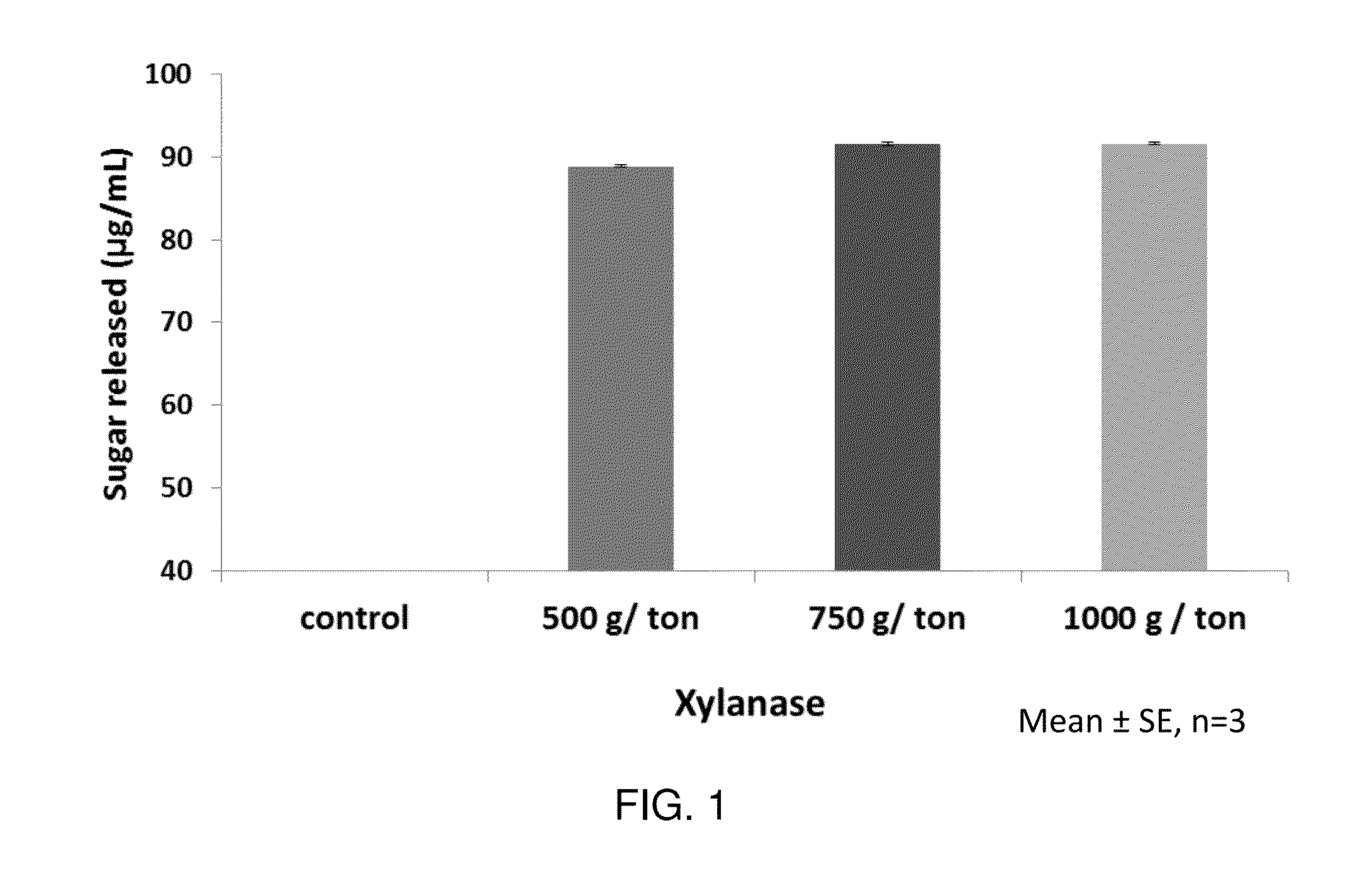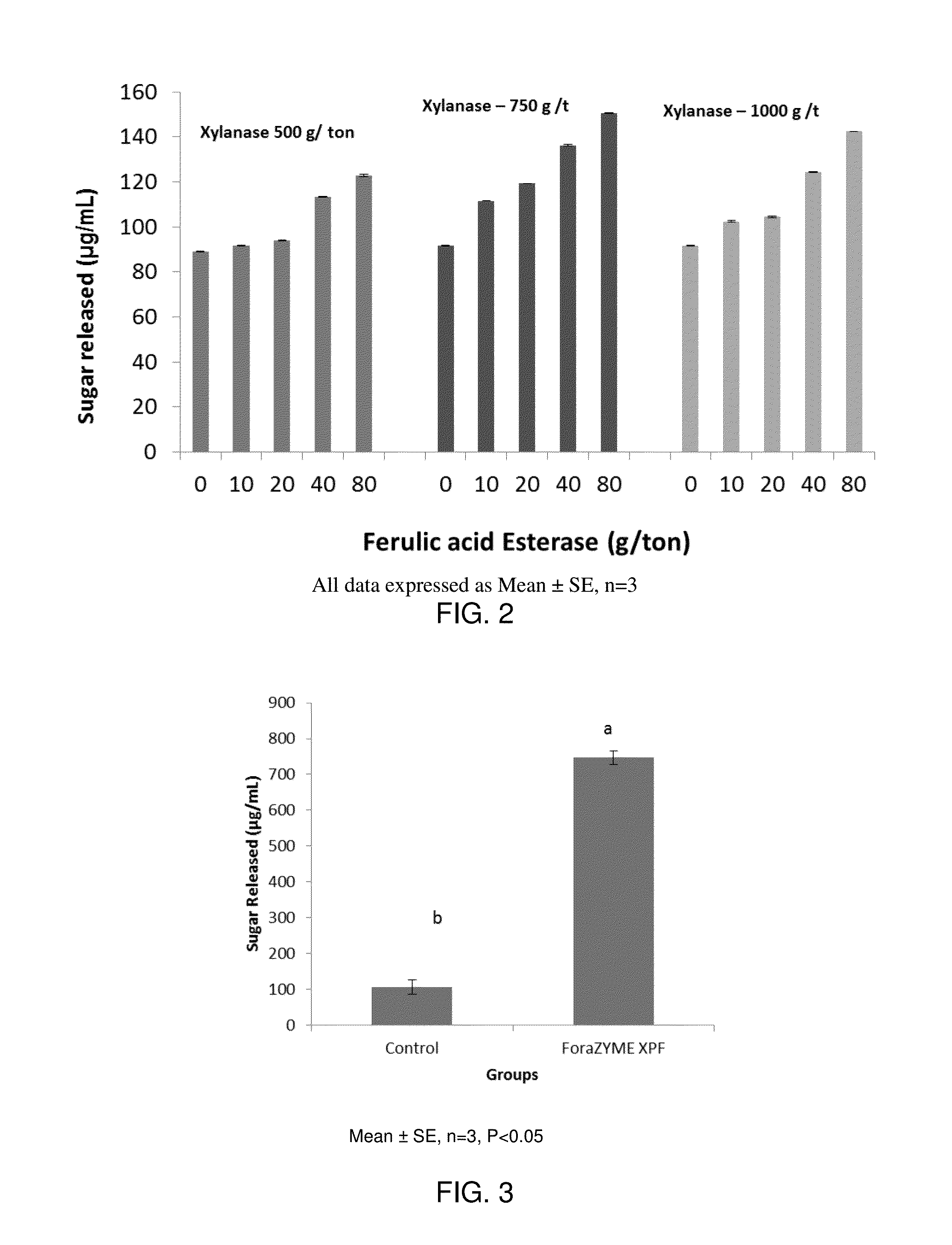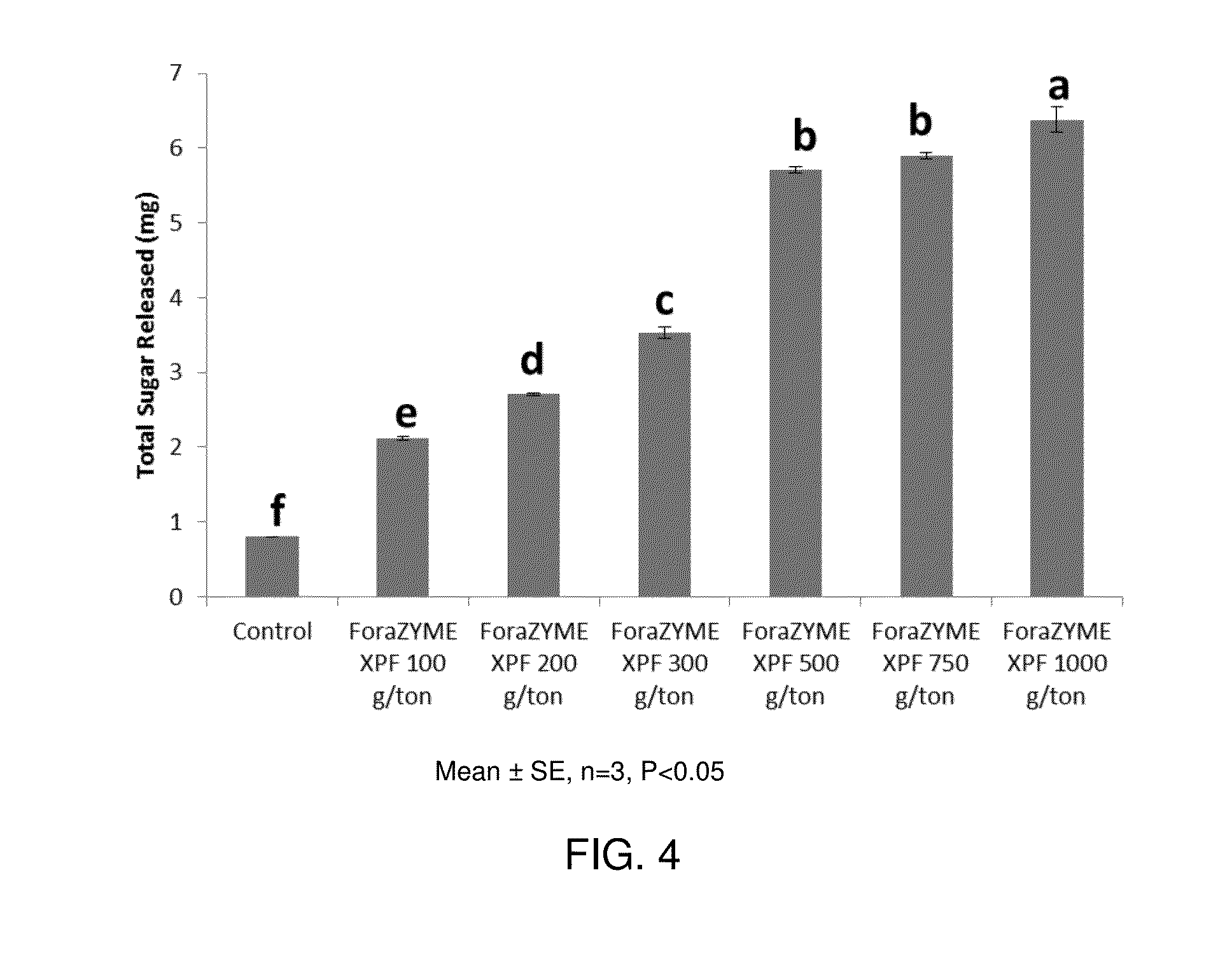Use of Enzymes to Condition Ruminant Feedstocks
a technology of enzymes and ruminant feedstocks, applied in the field of animal feed treatment, can solve the problems of limited stability, inability of equine and ruminant animals to digest fiber in diets, especially diets containing forage materials, etc., and achieve the effects of improving fiber digestibility, lignin, and reducing the breakdown of phenolic acid linkages
- Summary
- Abstract
- Description
- Claims
- Application Information
AI Technical Summary
Benefits of technology
Problems solved by technology
Method used
Image
Examples
example 1
[0051]To determine the influence of xylanase on rice straw, an experiment was performed by preparing a presoaking enzyme composition with xylanase at 500 g / ton, 750 g / ton and 1000 g / ton doses in 10 mL water and soaking 200 mg of rice straw into this. This mixture was incubated at 29-30° C. for 3 h. The released reducing sugars were estimated and the results were seen to be as in FIG. 1. The supplementation of xylanase improved sugar released from the rice straw compared to control without any enzyme supplementation. However, addition of xylanase did not show any improvement in reducing sugar released beyond 500 g / ton. This might be due to the fact that, the access of xylanase is hindered by the substitution, ferulic acid and phenolic acid cross links in the rice straw.
example 2
Synergy Between Xylanase and Ferulic Acid Esterase (FAE)
[0052]The potential synergy between xylanase and FAE in degrading rice straw and releasing reducing sugars was analyzed. This was performed using different combinations of xylanase and FAE ranging from 500 g / ton, 750 g / ton and 1000 g / ton of xylanase and 10 g / ton, 20 g / ton, 40 g / ton and 80 g / ton of FAE in 10 mL water. Different doses of xylanase and FAE were mixed with water and 200 mg of rice straw was soaked in the mixture at 27-31° C. for 3 h. The sugars released were analyzed and the results are shown in FIG. 2. The addition of FAE along with xylanase to the rice straw improved the sugar released from rice straw. A linear dose response was observed at all dosage of xylanase in combination with FAE. This might be attributed to the fact that FAE breaks the ferulic acid and diferulate cross links in the rice straw and provides the access for xylanase to penetrate the feed substrate and improves sugar release from rice straw.
example 3
Presoaking With ForaZYME XPF
[0053]Based on the previous experiments, a blend of enzyme composition containing xylanase, FAE, surfactants and stabilizing agents was prepared and named as ForaZYME XPF. The enzyme composition at a dose of 500 g / ton of forage was mixed with water and 200 mg of rice straw was soaked in this for 3 h at 30° C. The rice straw soaked with only water without enzymes served as control. The reducing sugar released was quantified and the results obtained were as shown in FIG. 3. From FIG. 3 it was observed that presoaking of rice straw with ForaZYME XPF significantly improved reducing sugar released. This could be attributed to the action of xylanase and FAE in the ForaZYME XPF composition which breaks the non-starch polysaccharides in the rice straw.
PUM
 Login to View More
Login to View More Abstract
Description
Claims
Application Information
 Login to View More
Login to View More - R&D
- Intellectual Property
- Life Sciences
- Materials
- Tech Scout
- Unparalleled Data Quality
- Higher Quality Content
- 60% Fewer Hallucinations
Browse by: Latest US Patents, China's latest patents, Technical Efficacy Thesaurus, Application Domain, Technology Topic, Popular Technical Reports.
© 2025 PatSnap. All rights reserved.Legal|Privacy policy|Modern Slavery Act Transparency Statement|Sitemap|About US| Contact US: help@patsnap.com



